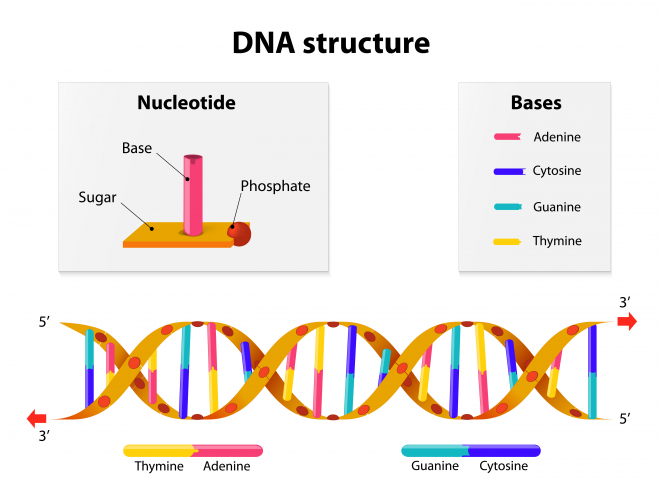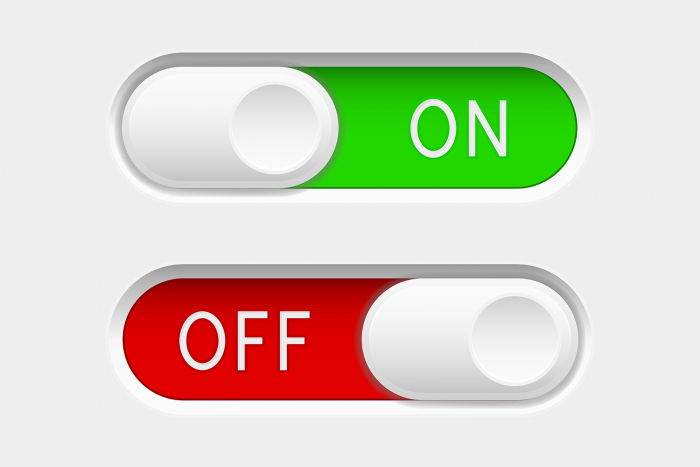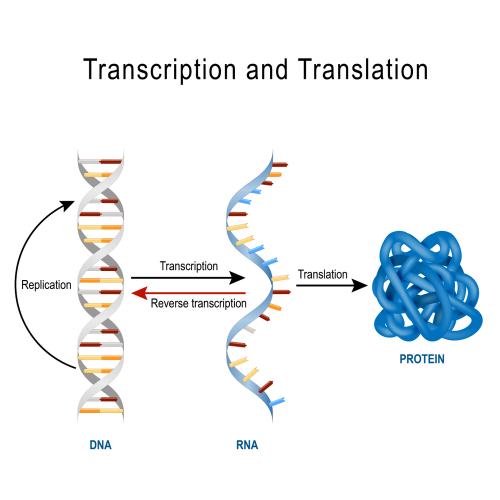We are our DNA!
Held in our cell nuclei, DNA is a long chain of tightly wound-up coded instructions which cells unravel, read and use to make proteins.
[Reminder: A protein or polypeptide is a folded polymer with a specific sequence of amino acids.]
When cells want to make a certain protein, they read DNA in chunks called genes that code for a specific sequence of amino acids.

Like proteins, DNA is also a polymer but of repeating nucleotides - units made of a phosphate group on a sugar attached to a nitrogenous base.
These are linked together to make the double helix swirl structure of DNA.
There are four different bases, A, T, C, G, and they’re very specific about what they pair with:
Adenine with Thymine and Cytosine with Guanine
These groups are complementary base pairs, and they are joined by weak hydrogen bonds, linking the two double helix strands in the middle!

So far, we have only said that DNA codes for proteins. This is not entirely true, because there are two types!
Coding DNA are the genes that make proteins.
Non-coding DNA sections are like on-off switches for coding DNA - they control gene expression by telling the cell to use or ignore certain genes, making sure we only get the proteins we need!

So to make a protein, there are two stages: transcription of DNA (in the nucleus) and translation (in the cytoplasm):
Transcription:
The cell reads the genes to get the amino acid order - but DNA is too big to get out of the nucleus to build the protein, so it uses a messenger instead!
The double helix is unzipped and an enzyme called RNA polymerase makes a one stranded copy of DNA, with this new complementary copy being called mRNA.
mRNA travels out into the cytoplasm to a structure called a ribosome, which is where proteins are made.
Translation:
The mRNA binds to the ribosome and is read. Another molecule, called tRNA, transfers 100s to 1000s of amino acids to the ribosome and joins them in the sequence the genes state, making the protein.
After protein synthesis, the polypeptide then folds into a specific 3D structure that makes the protein suitable for its function, like an enzyme and its active site.
So clearly we’re super dependent on DNA, and any change to it can have huge consequences!

But change happens, and when our DNA changes, we call this a mutation.
Mutations can change proteins by altering our coding and non-coding DNA, but usually, their function is preserved, and little difference is seen in our appearance (our unique phenotypes).
But occasionally, if enough of the DNA is changed, the protein’s shape can be altered so much that it can’t do its job, like an enzyme without a working active site!
Now it's time for some questions!

